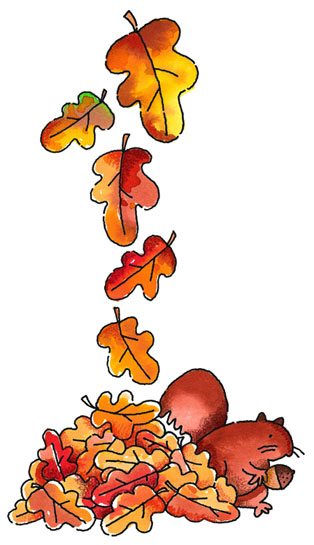|
 There
Was Something There
Was Something
For Everyone
at Our
October 4, 2006 Meeting!
The fall meeting for
2006 was held at the Doubletree Hotel in Alsip, Illinois on
Wednesday, October 4 from 8:30 AM to 4:00 PM. The meeting was
attended by 48 registered healthcare professionals and
representatives from: BD, Biosite, Dade, Hemocue, Hemosense,
Instrumentation Laboratory, Inverness-Biostar, Lifescan, Nanogen,
Nova, MAS, Quidel, Radiometer, RALS, RNA, Roche and Telcor.
-
The meeting commenced with opening
remarks by Joanne McEldowney, RN. Members of the core group
include: Wendy Denk, Ingalls Hospital, Harvey, IL; Joanne
McEldowney, RN, Univ of Illinois – Chicago, Chicago, IL; Gil
Salas, Univ of Illinois – Chicago, Chicago, IL. Sandra Curan
from the Univ of Illinois group assisted in registration.
-
The session started with a
presentation by Kathleen Steffens from the JCAHO. Her topic,
“Joint Commission Survey Process and Tracer Methodology”,
provided an overview of the accreditation process, Priority
Focus Areas for the Laboratory, Tracer Methodology, Measure of
Success (MOS) and Evidence of Standards Compliance (ESC).
Priority Focus Areas of the Laboratory includes analytical
procedures, communication, credentialed practitioners, equipment
use, infection control, information management, organizational
structure, orientation and training, patient safety, physical
environment, quality improvement activities, rights and ethics
and staffing. Data for determining the priority focus area may
be derived from proficiency testing, the electronic application,
office of quality management and previous recommendations.
When you think tracer methodology, think total testing processes
from the beginning through to the end. If there are no cases
available for the tracer, for example no transfusion reaction,
the tracer becomes a “what if” scenario. The tracer will span
for a full 24 months prior to the survey for each specialty
surveyed and proficiency testing for the last six events will be
reviewed.
-
POC areas that can be surveyed
includes: operating rooms (tissue use, blood warmers), pharmacy,
respiratory therapy, nursing units, cardiac cath labs, dialysis,
ambulance services, mobile health units and radiology. Her tip
is to do self evaluations and work on the resolution for the
areas found not compliant, involve all staff, utilize the JCAHO
website as well as JCAHO FAQs. Starting in 2007, there will be
a 6 onth window before due date rather than the current 45 days.
Post Survey activities include the MOS and the ESC. The MOS
documentation requires data collected over 4 months and is
quantifiable, a corrective ESC requires an actual plan, not a we
will do or to be developed type plan.
-
A 2 hour vendor fair followed the
JCAHO presentation and was well received by both the vendors and
the healthcare professionals. Out thanks to the 19 vendors who
participated and provided us with valuable information.
-
Following lunch, Rosalyn Chavez from
Precision Dynamics presented “Positive Patient ID-Automating the
Process from Bar Coding to RFID”. She described the types of
bar codes and suggested changing the orientation of the bar code
to improve the reading of the bar code. There are 2 common
methods of printing, laser and thermal, and she discussed the
problems for the laser and advantages for the thermal printers.
Since the National Patient Safety standards include positive
patient ID, those who are not using bar code labels were
encouraged to implement bar code labeling.
-
Our final speaker, George Dzikes,
PhD was from the IDPH. The original speaker, M. Masood, MD, was
unable to attend so Dr. Dzikes presented a similar topic on
Influenza A Pandemic. He said the Influenza A can do the most
harm and has the greatest pandemic influence. From the Clinical
perspective, the incubation is 1 – 2 days, has an abrupt onset
and the convalescence is at least 1 – 2 weeks if not longer.
There are different vaccines available but it takes up to a year
to make the vaccine and as he put it, the influenza virus is
sloppy, promiscuous and indiscriminate. There have been 10
influenza pandemics in the last 300 years, with one being in
1918 (Pan Flu) that resulted in 20 – 100 million deaths
worldwide. The Swine Flu hit in 1976, in 1997 was the Bird Flu
and in 2003, the H5N1 strain (another avian influence strain).
A new human influenza strain with pandemic influence could be
introduced worldwide via migratory birds or international travel
and preparedness and response plans should be prepared for such
an event.
-
As has become the custom, there was
a mini raffle in which three lucky attendees walked away with a
gift. Congratulations to Bill Glaves ($50 from Nanogen),
Christina Faigal (Biscotti and cup from Hemosense) and Debbie
Peracco (Basket of goodies from Dade)!
-
The results of the POCT survey gave
us several suggestions for future topics (such as competency
training, unannounced surveys a year later, process of
performing correlation studies, QI monitors to name a few) and
we thank the 26 who completed the survey. We also thank the 15
vendors who told us who could provide a speaker (or be a
speaker), sponsor a speaker or provide a lunch. Without our
vendors supporting us, we would need to charge more so thank you
again.
-
The next meeting will be April 4,
2007 at the Doubletree Hotel in Alsip.
|

 There
Was Something
There
Was Something